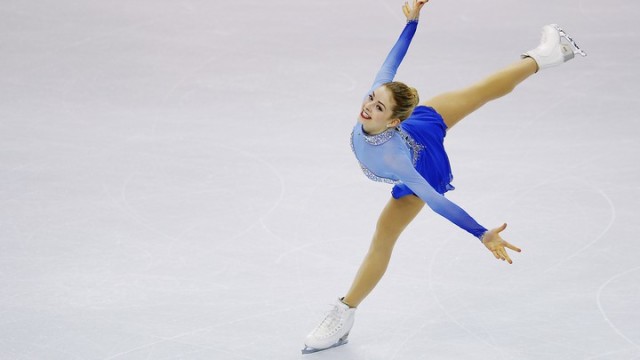Figure skating is a sport in which individuals, duos, or groups perform on figure skates on ice. It was the first winter sport to be included in the Olympic Games, when it was contested at the 1908 Olympics in London. The four Olympic disciplines are men's singles, ladies' singles, pair skating, and ice dance. Non-Olympic disciplines include synchronized skating, Theater on Ice, and four skating. From intermediate through senior-level competition, skaters generally perform two programs (short and free skate), which may include spins, jumps, moves in the field, lifts, throw jumps, death spirals, and other elements or moves, depending on the discipline.
The blade of a figure skate has a groove on the bottom creating two distinct edges: inside and outside. Judges prefer that skaters glide on one edge of the blade and not on both at the same time, which is referred to as a "flat edge". Skates used in singles and pair skating have a set of large, jagged teeth called a "toe pick" on the front of each blade. The toe picks are mainly used to help launch the skater into the air for the take-off when performing jumps. Ice dance blades have smaller toe picks than blades used for the other disciplines. During a spin, skaters use the "sweet spot" of the blade, formally called a rocker, which is the roundest portion of the blade, just behind the toe pick and near the middle of the blade.

